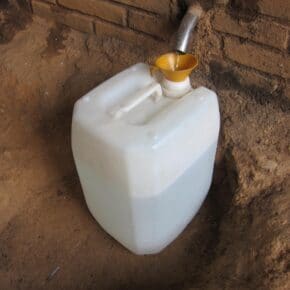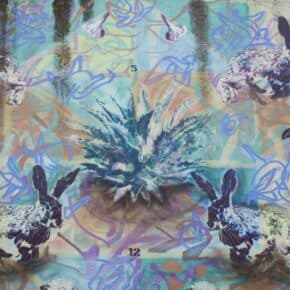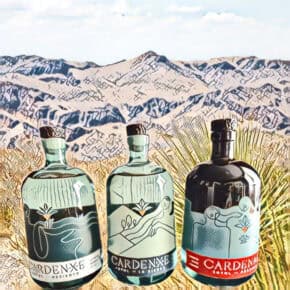I remember once hearing Spaulding Gray, the amazing monologist, talking about “the perfect moment.” It might have been from Swimming to Cambodia, or perhaps even during a live performance, I honestly can’t remember. But the idea of a perfect moment, when everything comes together to create a memory never to be forgotten, has stuck with me for years, and I hold those moments dear to my heart.
There’s that first time of climbing out of the clear, salty water at Emerald Isle in North Carolina. The dash up to the stairs to the walkway at the end of the deck; the turn of the handle and the sputter of warmish, brackish water jumping from the shower head, the sun setting, slight breeze, golden light. A moment clear as day. Another moment in Greece, on the isle of Lesvos, climbing the narrow and winding streets to the top of the hill, to the ruins. Again, a setting sun, but more than a breeze, enough to whip the waves of the steel blue Aegean Sea, to make the crest of the hill desolate, the Turkish shore across the straight seemed that much further. The smell of salt and baking lamb, me, catching my breath after the long climb up. I felt like I had conquered the world.
And then there is Oaxaca, where I have collected more than a few perfect moments over the years, each completely accidental. A hot car trip to San Dionisio – which I was disappointed to learn is named after Saint Dennis, and not in fact for Dionysius – not the usual impetus for perfect moments, but that is never the point: You can’t go in search of them. A hot morning, an ipod, my dear friend Ana and I talking men and music and mezcal, a visit to Don Pedro to retrieve a couple of bottles of mezcal (birthday presents for me and my mom) and then a meeting with Wahaka.
It’s hard to imagine how a friendship is forged between a 60 year-old palenquero from a small pueblo in Oaxaca and a foreign female from San Francisco, but it happened. I came bearing a gift of Old Potrero Rye from Anchor Distillery to show Don Pedro what’s happening in American distilling these days. He had framed the picture of the two of us taken during my last visit, and hung it on the wall of the Palenque filled with half naked calendar girls.
We talked mezcal, and pinches taxes (the common lament among small business owners everywhere) and then got around to sharing tales of our love lives, my current, his past. In truth, I relied heavily on Ana to translate, as Don Pedro’s Spanish is both gruff and mumbled. The heat was almost unbearable under the roof of the Palenque – the fire under the still at full strength, the noon sun above. A very drunk man stumbled in during our chat (three white plastic chairs in a circle on a dirt floor) his shirt completely open, a panza (belly) hanging over his belted pants. He appeared to have been driving, and seeing the difficulty he had just standing, well, those are the sad realities of drunk driving in Mexico.
Don Pedro had us try three mezcals he had made – a minero, a tobala and a pechuga. Here’s the reason why I love his mezcal – it is clean and forthright and simultaneously complicated. The first sip sets your mouth ablaze, and each after that becomes sweeter and mellower. It’s easy to understand how a bottle can disappear over a night’s meal or conversation. I listened to Ana get the third degree from Don Pedro – where are you from, are you married, have a boyfriend, want to have kids, who do you live with, will your parents get mad if I call you, and before long it was time to say goodbyes.
We drove to the center of San Dionisio, a cleaner more organized pueblo you could not imagine. We were meeting Francisco (Paco) Garcia of Wahaka Mezcal at the church before heading to the Palenque, which ended up being just a few blocks down from Don Pedro. I had met Paco the previous week at Los Amantes and was excited to visit the Palenque and hear the story, something so instrumental in understanding the flavor of a brand.
The Wahaka Palenque is surprisingly small given the output of 3500 liters a month. There is one pit oven, one mill, and three stills. It is a family operation, with Alberto (Beto) Morales, a fifth generation palenquero, overseeing everything. Wives, sisters, etc were labeling and packing boxes while we were there – a lot of it in preparation for the big April 30th party, celebrating the money raised in the US ($2,000) at a reception in Austin, Texas with Lila Downs for several schools in San Dionisio.
Beto talked about how he developed the Wahaka flavor profile – strong at front that finishes smooth and warm going down the throat. The challenge was to create a 40% (80 proof) mezcal that maintained the character and essence of a mezcal at a higher proof. There is a world of difference between a 40% mezcal and a 45% mezcal when it comes to the complexity of flavor. Generally speaking, I prefer the stronger mezcals when I am drinking it straight. I think for cocktails, especially like the basil one I had at el Olivo one night, the Wahaka Ensemble is perfect.
Side note – Wahaka has an interesting outreach strategy in the US and are actively working with chefs (Rick Bayless and Jimmy Shaw to name a few.) I am biased, loving both food and mezcal, but I think this is a good way to get into the market.
We tried a bunch of different mezcals and I was surprised by how much I liked the reposado – aged for two years four months in barrel. I am not usually a reposado person. I’m allergic to things aged in wood and have an overwhelming preference for the pure flavors of the blancos. But this one was a well flavored, strong and had a lovely warm finish. The madrecuixe, at 40%, had a long and spicy finish, the tobala at 47% had that wonderful full flavor explosion in the mouth and held its flavor for a while. We also tried a 45% Ensemble that completely opened my nasal passages and was so utterly different from the 40% Ensemble that is was hard to believe they are the same mezcal mix (50% espadin, 25% tobala, 25% madrecuixe.)
After this little bit of lubrication, we walked down the road to see where much of the maguey is grown. It was a flat field on the flood plain of the river winding through. Plots of espadin were punctuated by those of corn and alfalfa. There were also random arroqueños (so much bigger than I could have imagined) and a few madrecuixe. It was a beautiful spot, though I cursed my shoe selection of sandals as my feet got coated by the loose dirt.
From there, Paco and Beto suggested we head to the office to talk a bit more. This meant climbing into the car provisioned with bottles of water, glasses and, of course, a bottle of mezcal. We drove further down the road toward Chichicapam and then turned up a dirt road, passing a school, and a field where Wahaka is cultivating madrecuixe. It is a project with the school so that the kids learn the planting process. The madrecuixe are cultivated in an almost wild, haphazard, way while all the espadin are planted in neat rows. This is all an experiment and time will tell if the project works, if the flavor changes, and if this test case is a blueprint for other wild maguey cultivation projects.
The road continued until we finally we arrived at the office, a gorgeous spot on the side of the hill, overlooking the valley below and the mountains on the other side. Trees line a natural cold spring pool, crystal clear with yellow and blue rocks sprinkled in and around the water. We walked over to a tree with a natural rock table and a circle of rocks around it – the office. The bottle of mezcal was put on the middle of the rock table and the conversation took a relaxed meandering path, from talking whiskey to the merits of large companies buying up the mezcal from small producers (money in these small guys pockets) to penetrating the US market to the importance or significance of the word artisanal, to nicknames for the various brands (an off the record conversation so it will not be repeated here) which had Ana and I in stitches. In fact we were in stitches most of the time as both Beto and Paco are extremely funny and have pretty much perfected the double entendre word play known as abur here in Mexico. And throughout the conversation, steers wondered in to drink from the spring pool, the sun moved lower, the air turned less warm (certainly cooler is not a word that can be used.) A perfect moment.
It’s good to have challenging conversations about the business of mezcal because huge issues hang in the balance; the pros and cons of large companies buying up mezcal throughout the valley from small producers for large batch production, cultivation of wild magueys, social responsibility of companies like Wahaka giving back to the community, capitalism in general, until it all came back to this truism from Paco – “a country without an alcohol is a country without an identity.”
I like these guys.
So like every other meeting with palenqueros, there was a test. The sun was settling lower, our bellies were rumbling, and we needed to think about heading home to Oaxaca. But first, the challenge: To cross the rocks in the water to get to the big rock, all while holding the bottle of mezcal. And thankfully I passed, though I would have happily fallen into that cool water.
We drove home with Paco, stopping once more in Tule to eat grilled meats and memelas at Elvira. The conversation became sillier, the jokes even more ribald (I didn’t understand half of them but could tell by the blush on Ana’s face that they were probably a little over the top.) We promised to meet for drinks the following night, said quick goodbyes as we dropped Paco off, and then headed back to the house, blissfully tired and full.












Leave a Comment